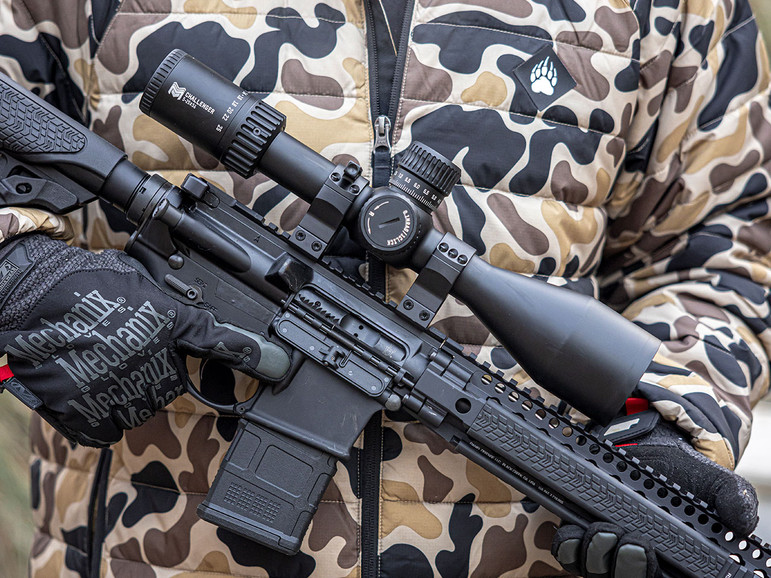
Which Scope Rings are Right For Me?
Posted by Monstrum on Nov 25th 2025
Wondering which pair of scope rings to buy for your new rifle scope? With so many options to choose from, these days choosing the right pair seems like an impossible task, but once you understand the different ways scope rings can be mounted and how tall you want your scope to sit above your rifle, choosing the correct pair becomes a simple matter of making sure they match your scope.
In this article we’ll review the different mounting types for scope rings and when you might want to choose one type over another. We’ll also cover scope ring height and finally how to choose the correct diameter rings for your rifle scope.
What are scope rings?
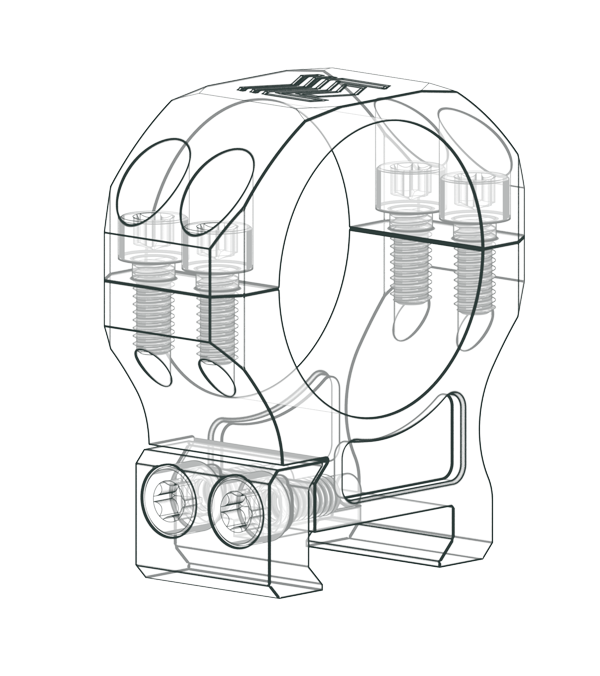
Scope rings are the component with which you attach a scope to a rifle. They consist of an actual ring split in two halves that screw together to clamp around a scope tube and a base that attaches directly to a rifle’s receiver or clamps to an optic rail. Scope rings are typically sold in pairs unless you are buying a one-piece scope mount, which is essentially just two individual rings attached to a single base.
Scope rings come in a variety of mounting types, heights, and diameters to suit personal preference and optic choice. They also come with additional features like bubble levels or see-through bases so a shooter can still use the iron sights beneath their scope.
Scope Rings by Mounting Type
Scope rings are available in three main types of mounting options: direct mount, Picatinny or Weaver rails, and 3/8” dovetail.
Direct mount scope rings are the oldest and most traditional style of mounting. Originally, rifle receivers had to be specially modified to accommodate the mounting of a scope. These days, popular models of rifles like the Ruger 10/22 come directly from the factory drilled and tapped for the direct mounting of scope rings—all you need to do is screw the rings directly into the receiver with a bit of thread locker and you can mount your scope. Direct mount rings have the advantage of eliminating an optic rail and they can also potentially sit a bit lower than rail mounted rings, but they also come with the major disadvantage of being inconvenient to remove if you ever want to change your optic setup and they will only work with a single type of mounting pattern.
The most popular mounting option for scope rings these days is picatinny rail followed by weaver rail. Picatinny rose in popularity during the Global War on Terror and many “optics ready” rifles and shotguns come with picatinny rails from the factory. It is also the pattern used by the ubiquitous AR-15 on flat top style upper receivers. Scope rings designed to fit to picatinny rails either screw together at the base or use a quick release mechanism like a lever that has to be adjusted first, but once set, the ring can quickly be attached or detached. Picatinny scope rings have the major advantage of being easily transferable to any other firearm that has a picatinny rail. By design, Picatinny rails also keep their attachments including scope rings securely in place against the force of recoil because each segment allows a cross piece to brace against the foremost rail segment when mounting.
Weaver rails by comparison are less popular than Picatinny. The two are similar, but weaver rails have a slightly narrower gap between segments meaning that Weaver-compatible rings or other attachments can sometimes fit on Picatinny rails, but the inverse isn’t true. The two rail types also use different dimensions of cross bars which further complicates interoperability—generally, it's best to use rings designed for the rail type you’re using. While Weaver rails are older and less popular, there are plenty of scope rings out there made specifically for Weaver rails and they work the exact same way as rings designed for Picatinny. Weaver rails similarly resist the forces of recoil in the same way as Picatinny rails.
Finally, we have 3/8” dovetail mounted scope rings. The 3/8” dovetail mounting style is typically only found on rimfire calibers, airsoft guns, or air rifles. Because it is a simple dovetail cut instead of a series of segmented channels, 3/8” dovetail is cheaper and easier to manufacture, but it is also less stable for optic mounting because it only relies on clamping force alone to keep the optic in place unless there is a relief cut for a set screw. Because the force of recoil can dislodge optics that aren’t securely mounted, 3/8” dovetail is best suited to firearms with lighter recoil hence why its mostly found on rimfire calibers only. All the same, there are plenty of options for 3/8” dovetail scope rings.
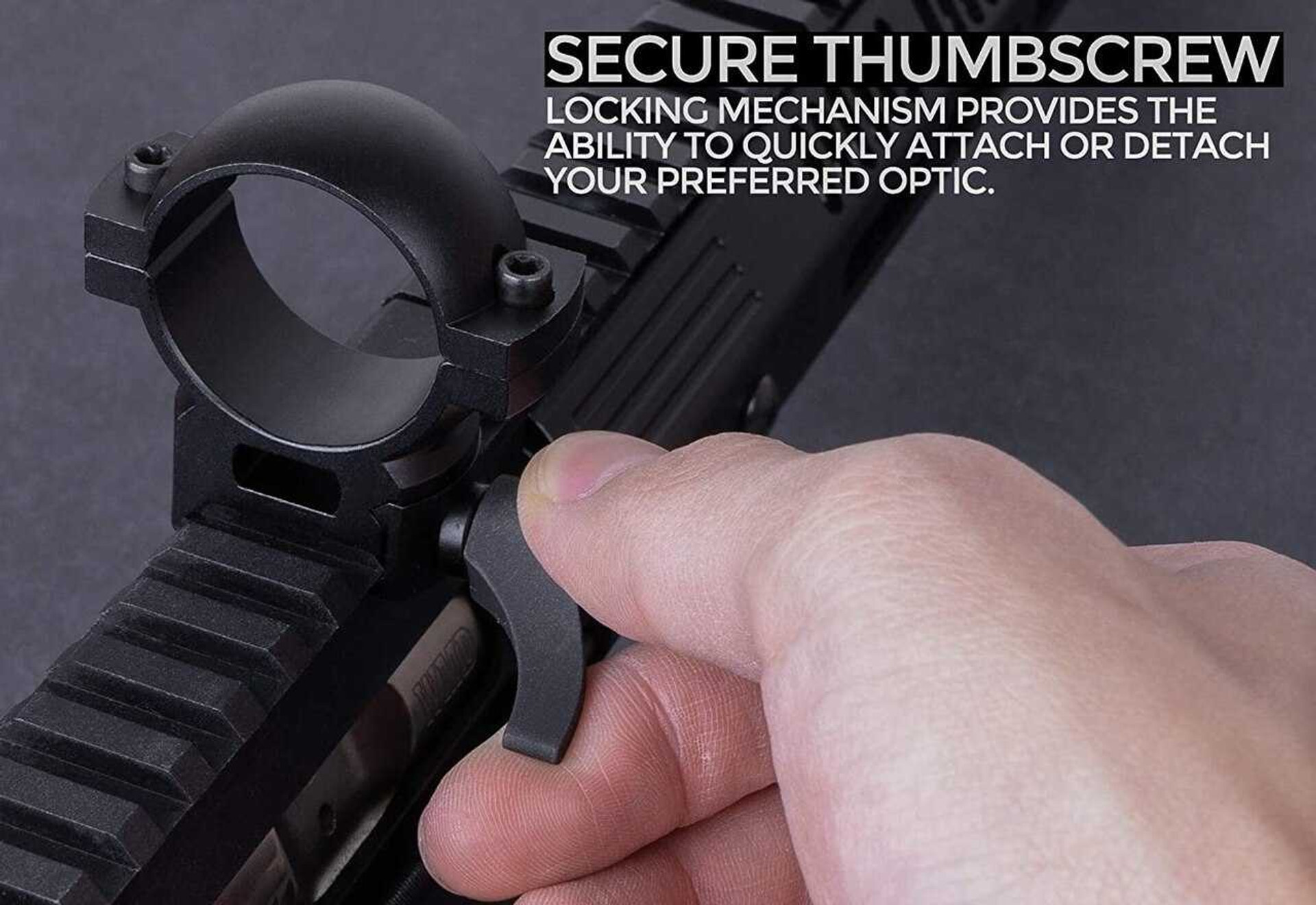
Scope Rings by Mounting Interface
Rail mounted scope rings can be categorized by the way they attach to their rails. The most common are typical screw mounted rings, but there are also quick detach options.
Screw mounted rings are the most traditional type. They are mounted via one or two screws which thread one end of the ring’s base in and out. Screw mounted rings can be very secure and should always be mounted with thread locker to ensure the screws won’t walk out, but they have the disadvantage of being slow to remove. Some are also impossible to swap out without needing a tool, though certain types of screw mounted scope rings come with oversized screw heads that make installing and removing easier.
The other mounting method for rail compatible scope rings is quick release. These typically have a large lever on one half of the base that can be adjusted via a screw in and out for tension. Once adjusted, they can be locked into place by flipping the lever which cams half of the base into place locking the ring firmly to the rail. Quick release scope rings are very convenient for installing and removing optics quickly, but they have the disadvantage of potentially being pulled open unintentionally if the levers get caught, say on webbing or a plate carrier.
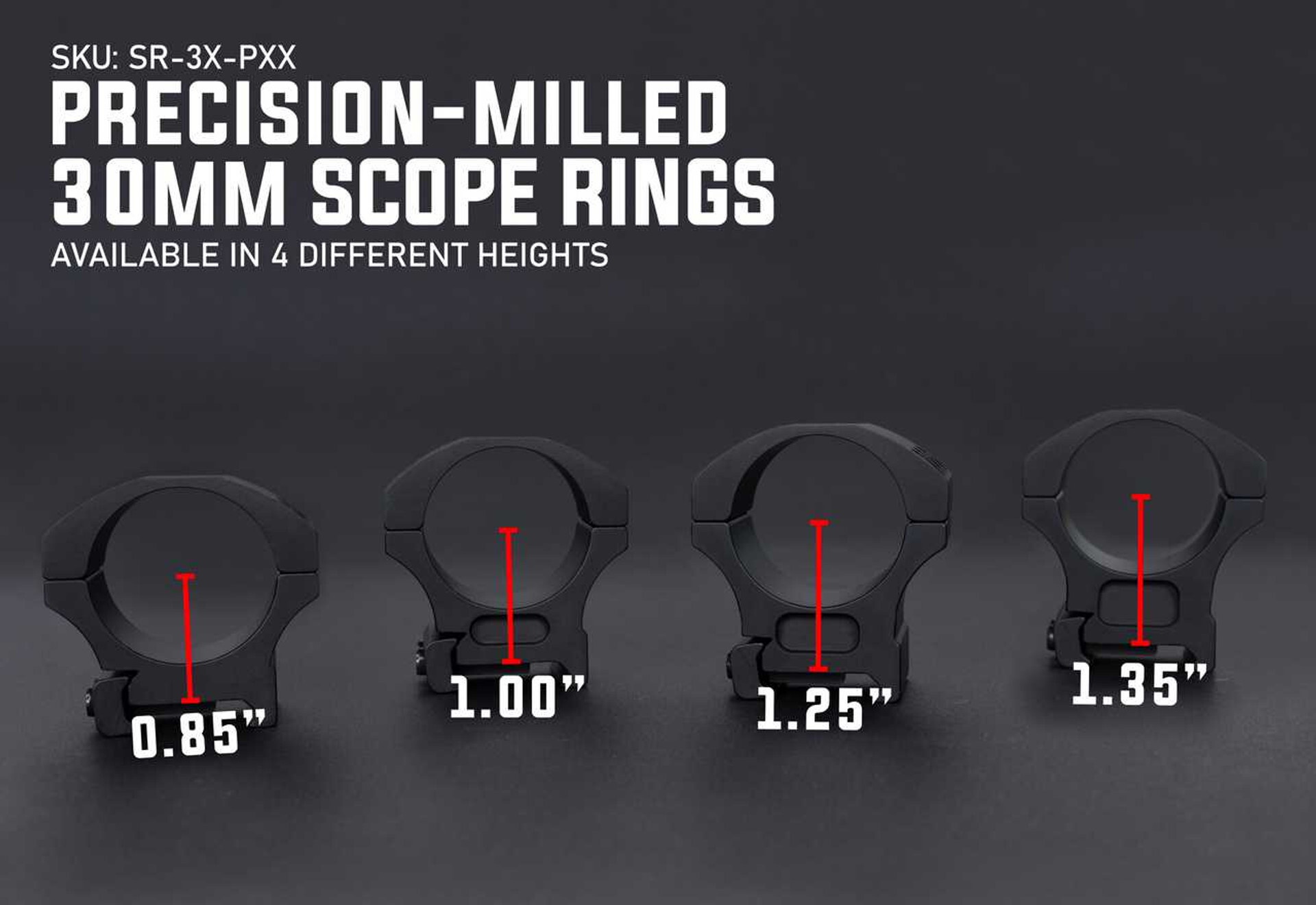
Scope Rings by Height
Scope rings are sold in a variety of heights to almost every combination of optic and rifle you can think of and personal preference for the shooter.
The first and most important consideration when selecting a set of scope ring’s height is how much clearance your optic will need above the rifle’s barrel. Scopes with larger objective lenses will need more vertical clearance whereas straight tube scopes like an LPVO will not.
The mathematical formula for determining which scope ring height you need is as follows:
(Objective Lens Radius) - (Scope Tube Radius) - (Base or Rail Height) = Minimum Ring Height
Put simply, the difference between your scope’s objective lens and tube radii and the height of the base or rail it will be mounted to is the minimum height you’ll need from your scope rings to clear the barrel. From here, you may want to go up by one or two millimeters just for good measure.
Once you have determined the minimum height needed for your scope rings, you should next determine whether you want to go higher for personal preference or if you want to be able to use the iron sights underneath your scope. Rifles like the AR-15 necessitate the higher mounting of scopes and other optics because they have an in-line buffer tube and stock, though generally speaking with drop stock style rifles, you’ll want the scope mounted as low as possible while still clearing the barrel because this means you will have the minimal amount of elevation correction when shooting at distance, though there are a couple exceptions to this rule.
If you anticipate shooting more from a standing position than you do from prone, then you might want to get slightly taller scope rings because shooting from the off-hand position means your head will naturally sit higher above the stock comb. The inverse is true if you’re going to be shooting prone.
Certain scope rings will have see-through bases which allow you to use the rifle’s iron sights underneath a mounted scope. See-through bases are typically achieved by having a large cutout through the center of their taller body. These are best suited for hunting where you might suddenly need to take a snap shot at close range, but they can also be convenient for plinking or competitive shooting, just bear in mind that see-through bases have to be quite tall to work properly.
Scope Rings by Tube Diameter
The final dimension to consider when buying scope rings is the diameter of the rings themselves. Ring diameters correspond to standard sizes that rifle scopes tubes are made in: 1”, 30mm, or 34mm.
These tube diameters tend to correspond to magnification power, so lower power rimfire scopes usually have 1” tubes whereas long range precision scopes are usually made with 30mm or 34mm scope tubes.
To determine which ring diameter you need to buy, just look at the technical specs on your scope’s box or wherever it was listed when you bought it. Tube diameter is always included as part of a scope’s technical dimensions.
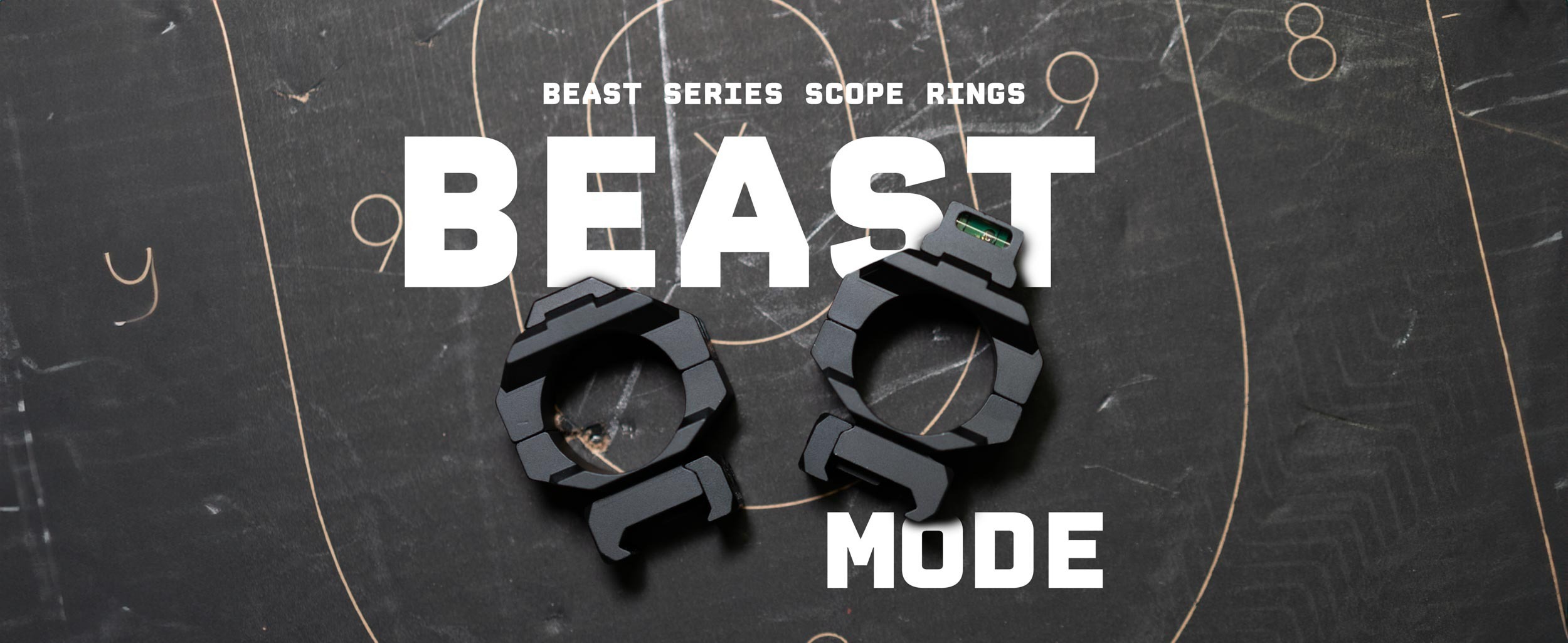
Additional Features on Scope Rings
Some scope rings are sold with additional features that, while not critical to their primary function of mounting a scope, can make a shooter’s life easier. These features include see through bases which we’ve already covered, but also bubble levels.
Bubble levels work in exactly the same way as the bubble level you might have in your tool box: they can indicate quickly whether or not your rifle is perfectly level before you take your shot. Having a perfectly levelled rifle isn’t a concern when you’re shooting at close range, though for long range precision, even a slight cant can cause you to miss. This is because if your rifle and scope are even slightly out of perfect vertical alignment or if your rifle was zeroed with a different vertical alignment then when you are taking a long range shot, your scope’s zero will shift because it is no longer in the same position in relation to your rifle’s barrel. Again, this discrepancy is usually small enough not to matter at close range, but it just might cause a miss at ranges where a few degrees can mean a big miss. Having a bubble level on your scope ring both at the time of zeroing and when shooting at long ranges effectively eliminates this variable.
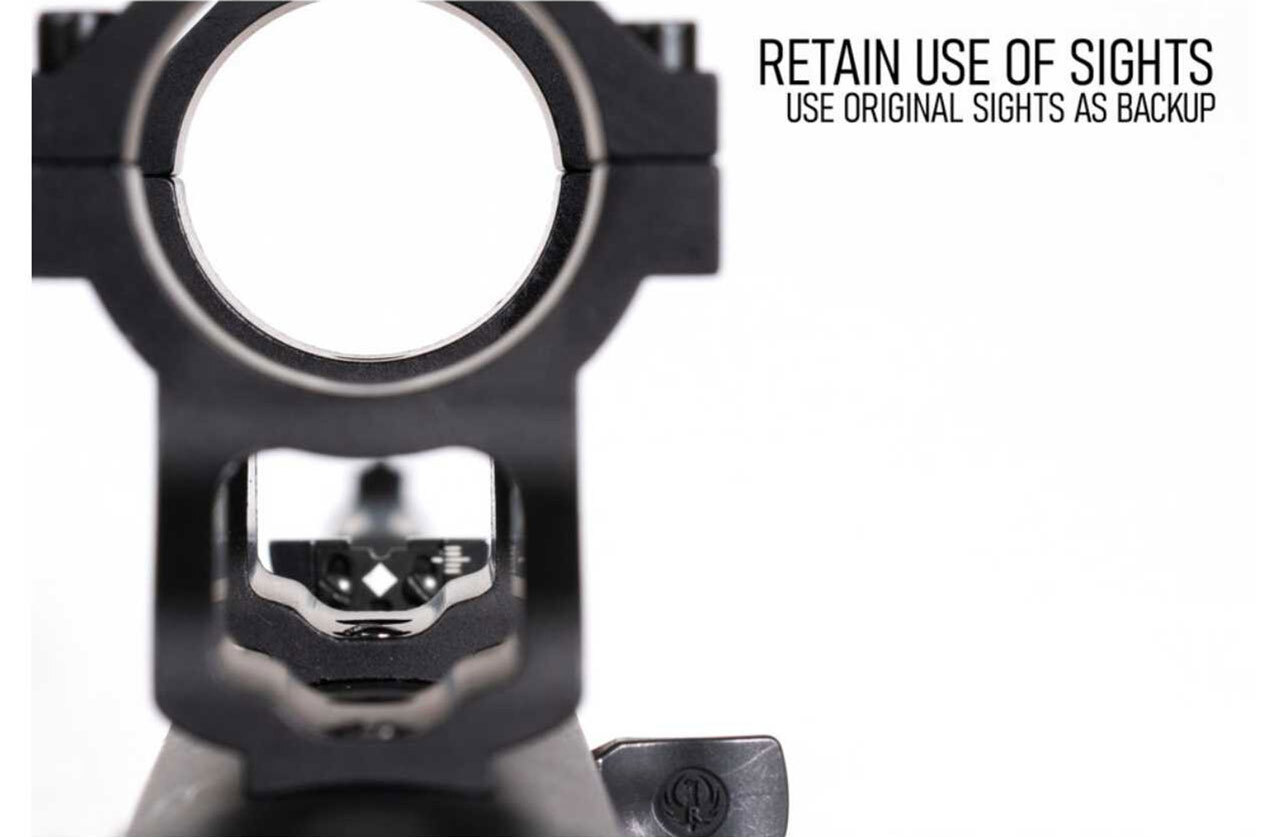
Conclusion
Scope rings may seem like a confusing or complicated part to buy, but once you’ve determined what mounting interface and height you need to buy, the only final consideration is personal preference for things like extra height or preferred shooting position and finally the ring diameter which is determined by the type of scope you’re using.
Scope rings can be fitted with additional features that make life easier like quick release levers, see through bases, or bubble levels, but for the most part, finding the right fit for your scope and rifle is a simple matter of doing the math.
Check out our full line of rifle scope rings and one piece scope mounts to find the perfect match for your setup.

